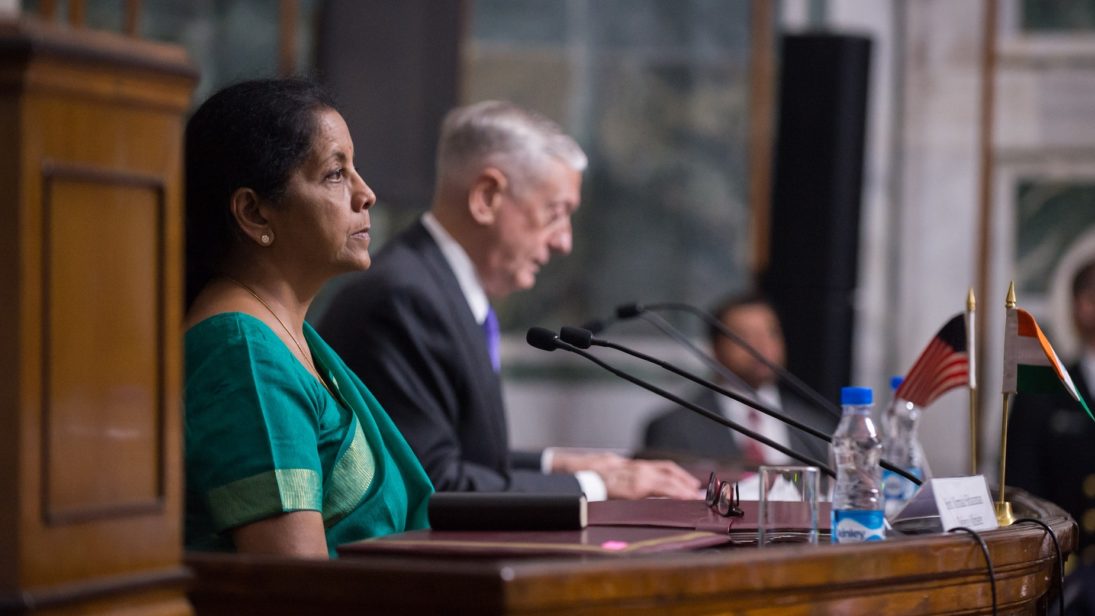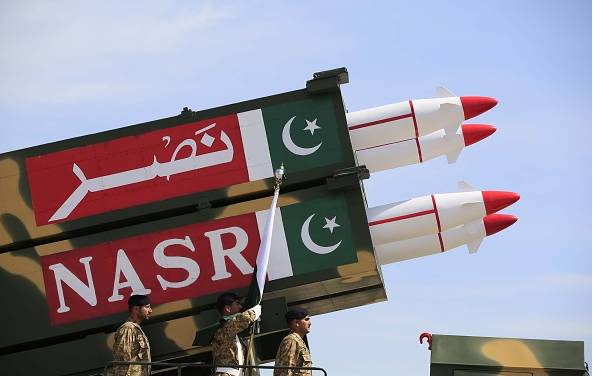
Yet again, South Asia watchers are concerned about the growing conflagration between India and Pakistan, as evidenced by constant ceasefire violations along the Line of Control (LoC) and inflammatory statements by prominent officials of both countries. The latest spree of acrimony, which began in 2016, owing to the simmering situation in the Kashmir valley, has once again brought Islamabad and Delhi one brazen terrorist attack on Indian soil away from climbing the escalation ladder. Though the costs of military conflict between the two nuclear-weapons states would be colossal, India has expressed its willingness to act against Pakistan for its alleged involvement in instigating violence in Kashmir – an assertion that Pakistan vehemently rejects. After militants recently attacked an army base in Jammu, killing five soldiers and one civilian, Defense Minister Nirmala Sitharaman held Islamabad responsible, declaring “Pakistan will pay for this misadventure.”
Despite its resolve to punish Islamabad for its alleged sponsorship of cross-border terrorism, India will find it extremely difficult to compel Pakistan to act in India’s interests in Kashmir and beyond with the use of force. This is because the options at India’s disposal for compellence are liable to escalate the situation. For instance, the Cold Start military doctrine, India’s limited war doctrine vis-à-vis Pakistan, is designed to swiftly seize territory without provoking nuclear first use by Pakistan. However, given the strategic situation in the region, New Delhi will be unable to compel Pakistan to act in India’s interests while avoiding a nuclear response from Islamabad.
Understanding Compellence and Cold Start
India has long labeled Pakistan a rogue state that harbors and exports terrorism, blaming its neighbor for orchestrating terrorist attacks on Indian soil, such as the 26/11 bloodbath in Mumbai. Furthermore, both civilian and military leaders have enunciated the need to punish Islamabad to compel it to change its inimical behavior. In the parlance of international relations, compellence is “the ability of one state to coerce another state into action, usually by threatening punishment.” A term coined by Thomas Schelling, compellence relies upon a credible military threat to cajole the enemy into changing its course of action.
With India adamant that Pakistan empowers anti-Indian militant organizations, New Delhi wants to compel Pakistan to suppress the outfits that are believed to be under state patronage, such as Lashkar-e-Taiba (LeT) and Jaish-e-Muhammad (JeM). One of the ways India wants to compel Pakistan is by invoking Cold Start. Developed after the abysmally slow mobilization of forces in Operation Parakram, after a major LeT attack on the Indian parliament in 2001, the doctrine’s goal was to launch a conventional strike against Pakistan that would cause significant attrition to Pakistan’s forces prior to the international community interceding, all while preventing a nuclear response by Pakistan. Relying on speed and mobility, eight integrated battle groups (IBGs) are to attack along various axes to penetrate Pakistani territory. Thereafter, with close air support, the IBGs will apply massive firepower and three holding corps take a defensive position, biting and holding territory up to 50 miles (80 kilometers).

Escalatory Dangers of Cold Start
If Cold Start is operationalized after a terror attack on Indian soil is believed to be orchestrated by Pakistan, it will place certain pressures on the escalation ladder. Pakistan has a battle-hardened military, bolstered at the strategic level by the country’s nuclear capabilities. This nuclear layer of Pakistan’s force structure hampers any attempt to reinforce compellence via an Indian military option by the need for escalation control.
Apart from the certainty of subsequent escalation, achieving the main objective of Cold Start – inflicting pain to Pakistan by causing attrition to its army and seizing its territory – cannot compel Pakistan to act in India’s interests. If New Delhi captures Pakistani territory, this will likely violate Pakistan’s spatial nuclear threshold, as major cities including Lahore and Sialkot may come under the control of the Indian Army. In addition to this, if India is able to cause maximum attrition to the Pakistani military, then it will be a breach of Pakistan’s military threshold, something that would make a Pakistani nuclear response unavoidable. Thus, instead of weakening anti-Indian elements within Pakistan, the operational aims of Cold Start will invoke a “nation in arms” response from Pakistan.
Taking into account that such a scenario would certainly violate Pakistan’s nuclear thresholds, India’s quest to achieve compellence by the application of military power in the shape of the Cold Start doctrine is therefore untenable, as the bilateral deterrence equation between the two countries has closed the window for compellence. If one takes the pressures these options exert on the escalation ladder into account, it would be reasonable to assert that compelling a nuclear state like Pakistan, especially through conventional warfare, is not viable.
Deterrence and Compellence: India’s Options
While deterrence and compellence are both forms of coercion, they tend to operate in opposite directions. For instance, if Pakistan augments its deterrence vis-à-vis India, the latter’s options to compel Pakistan become increasingly limited. Pakistan’s efforts to fill its deterrence gaps by inducting tactical nuclear weapons (TNWs) and improving second-strike capabilities by adding a sea-leg nuclear deterrent will make limited war options more costly and risky, especially given Pakistan’s retention of the first-use policy and its ambiguous nuclear-use redlines. To this end, it is clear that the escalatory dangers of India’s Cold Start doctrine were aggravated after Pakistan inducted the short-range Nasr missile in a bid to deter India from pursuing its limited war strategy.
Indeed, the fear of early escalation invites a deterrent effect on the adversary. However, New Delhi could muster the confidence to call Islamabad’s nuclear bluff by using its ballistic missile defense (BMD) capabilities to take offensive military actions against Pakistan. With India under a safe defense shield, especially against Pakistan’s short-range missiles, India’s pursuit of a military option will become even more rapid. With both countries seeking to shift the bilateral deterrence equation in their favor, strategic stability on the subcontinent will continue to remain vulnerable to crises.
***
Image 1: James N. Mattis via Getty
Image 2: Andolu Agency via Getty


